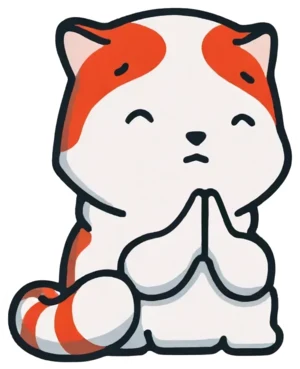I imagine an Indian election as having poles on either end. Each pole has a primary group taking charge and voting at the highest percentages for a party while constructing a coalition of other groups to make it over the seat line in a parliamentary election. None of the groups are necessarily hyper-conscious of this coalition construction. Instead, this is the responsibility and strategy of political parties. Winning an Indian election consists of patronizing a base demographic(s) and then poaching voters from fairweather groups.
On a grand pan-India level, one pole is occupied by the (Hindu) GCs and galvanized by the BJP. The other is headed by Muslims and led by the INC. Muslims and GCs each consist of around 15-25% of India's total population and vote 70%-90% for their respective parties. This fealty and current cultural currents have caused them to arrive at opposites. Across states and especially national elections, each group is a bedrock for building a winning electoral arithmetic. In years prior, the INC created a domineering coalition of Brahmins (part of GCs), Muslims, and SCs to repeatedly shatter a fragmented opposition.
The death of the country

A lot of Indian politics is arguing whether the GCs or Muslims are worse for the rest of the crowd. Which “Other” causes bigger sorrow for society? Is it the GC and his apex, the Brahmin, who are cast as oppressors of all other castes conspiring amongst themselves to hoard India's riches and ranks? Or is it the Muslims who are framed as traitors to the Indian nation and gluttons feasting on appeasement initiatives created by the government? Each pole must stoke animus against the other to prove who is the real “Other.”
I like being called the apex

The double-edged nature of each pole means that both GCs and Muslims must court OBCs, SCs, STs, and ORMs to join their coalition. Victory is a transaction. Whoever is the most expansive wins; the parochial loses. A massive live example has been shown in this contrast as the GCs have successfully crafted a broad spectrum of votes across all Hindu castes by being more accommodating and addressing other communities' needs via the triumvirate of welfare, representation, and reservation. Meanwhile, Muslims have shot themselves in the foot multiple times with flagrant extremism and parochial protests that heavily alienated other communities as roaming mobs threatened and even executed beheadings due to perceived insults towards the Prophet as well as riots to stop a law accelerating refuge for non-Muslims in certain South Asian countries.
Even with this abundance of animosity, both sides attempt to chip away at each others' poles, for since each group is the base of caste arithmetic for many elections, a slight dent could have an oversized effect on electoral calculations. Hence, the BJP is trying to crack the INC's Muslim vote bank by injecting caste consciousness into Muslim society, while the INC is bankrolling GC influencers on social media to demoralize GCs who they claim are being taken for a ride due to the BJP's overtures towards other castes. If GCs or Muslims split their votes even a bit, their coalition will collapse, and the other side will genuinely make them feel like “The Other” once in power.

I do it for free
The one caveat here is that due to Pareto effects, GCs and other affluent groups are present in leadership roles at both poles. They are also more palatable for the predominantly Hindu masses, if you can even call that gaggle of caste minorities a “mass” in the first place.

Land means labor means capital. Over time, dominant landed castes have acquired significant power via politics and pugnacity. Concentrated land holdings, wealth, and political influence have allowed many of these castes, especially those in South and West India, to transition from agriculture into more industrial endeavors and eventually downstream knowledge and mercantile vocations.
The most striking result of this economic evolution is the birth of regionalism as a bulwark of dominant caste interests against the centralized power centers of the Congress and especially the BJP. Why would these castes, who are among the most socially conservative in India, not want to ally with a “right-wing” party? The answer again lies in the feudal aspect of their castes. Despite certain regional parties engaging in pro-business and industrialization reforms as well, the BJP remains a threat firstly due to the higher degree of reform they propose and secondly because the BJP commonly foists itself as the vanguard of non-dominant castes, whether SC or OBC. The feudal castes become the arbiters of industrialization if it's on their terms. The BJP is a threat to the cornering of economic surplus.
Thus, to thwart the ambitions of national parties, dominant landed castes organize themselves into parties of their own. With plenty of local muscle and influence due to still present feudal mechanisms, these dominant castes impose their own norms, icons, and mythos on other castes in the state. The cover is smartly provided by people who are their exact opposites; cunning academics and journ*lists begin publishing narratives where non-dominant castes were all hoodwinked by conniving upper castes, usually Brahmins, into practicing Hinduism. In cases where the dominant landed caste is upper caste, those landed upper castes will simply blame people from other states for the same faults. They will then claim that it is only due to the dominant landed caste, a paragon of unblemished aboriginal purity, that the unique regional culture of yore has been preserved. Standard Hindu practices such as ancestor worship, tree worship, etc… are framed as non-Hindu. Hindu Gods and Gurus are appropriated as aboriginal or a rebellion against evil upper-caste Hinduism.
Keep caste. Exit creed. All hail regionalism.

Much of the age of the Indian Republic has been dominated by the Nehruvian “Idea of India.” Secularism and socialism reigned for decades until Nehru's grand vision experienced an exponential decay come the 1990s. Ever since then, Hindutva has ascended to the peak of Indian politics. But today, we are not interested in what these ideologies believe. We're here to explore how “Ideologues,” those true blue believers in their cause, interface with “Identitarians,” those that simply want their bag and will then promptly piss off. In India, Ideologues can only obtain power by allying with enough Identitarians. This is how political alchemy ferments, where dirt-shrouded masses can deliver a golden mandate to change the country forever.
Today, Indian liberals bank on numerous backward caste and religious groups who are fundamentally illiberal in their day-to-day outlooks and lives but function as electoral and street muscle. Similarly, the Indian right must craft caste coalitions from groups who may be highly parochial, a far cry from their ideal of Hindu unity. The Ideologue must sacrifice short-term ideological goals to gain the raw power of Identitarian groups. Nehru's quest for secularism devolved into appeasement to capture the INC's Muslim vote bank. The BJP's Hindutva has had to indulge in caste-based doles and reservations to expand its electoral footprint.
Identitarian groups have difficulty allying with each other since they compete for very zero-sum things – doles, resources, reservations, feudal power dynamics, etc… Identitarians are limited to the local. Ideologues can levy with Identitarians but clash heavily with other Ideologues. They are more interested in the macro. Ideologues use incremental change over the long term to fundamentally refashion society. In rare cases where Ideologues ally with each other, such as when Indira Gandhi joined forces with Communists, a new chimera of thought will emerge. This instance yielded an impactful left-ward shift in the INC's ideology that has reverberated till today.
The Ideologue is much more irrational than the Identitarian who trades for bullet & butter. The Ideologue doesn't respond to usual political incentives as an Identitarian would. The Ideologue gazes at the horizon, believing in their ideals even if present circumstances are dim. They are powered by the long-term belief that the sun of victory will rise on that horizon rather than an immediate profit, which is the primary onus for Identitarians.
The Ideologue also grants upward mobility for Identitarians within their structure. So eventually, Identitarian descendants would ascend in the ideological superstructure, sometimes even influencing it themselves. The Ideologue wants to convert the Identitarians. Time is the confidante of the Ideologue. By ensuring spurts of resources and placation to Identitarians, the extension of an Ideologue's time in power solidifies long-term ideological impact and Identitarian drift towards ideology.

Essentially, above the million minorities are millenarians who play the minorities against each other to bring forth a new age of India. As India develops, you will see this transition from identitarian to ideological voting. This is already highly visible in urban centers today, where debates on caste recede, giving way to debates about what a composite Indian identity means and concerns over development. This is the real need of the hour. The million minorities framework of Indian politics must die. Instead of voting based on nihilistic incumbency and cannibalizing identitarianism, Indian democracy must transition to electoral mandates founded on solid governance and ideological mores. A new era of Indian politics must arise if India is to rise in the world. It is time the million minorities finally converge into an Indian mass.








 Hypermuscular Hindu Hridaysamrat
Hypermuscular Hindu Hridaysamrat 




Jump in the discussion.
No email address required.
please please be the frontline karsevak & get shot
MULAYAM SINGH DID NOTHING WRONG
Jump in the discussion.
No email address required.
It'll be under a Yogi government so police will be getting us all prasadam instead.
Jump in the discussion.
No email address required.
b..but wasnt yogi supposed to be the pm by that time??
Jump in the discussion.
No email address required.
More options
Context
More options
Context
More options
Context